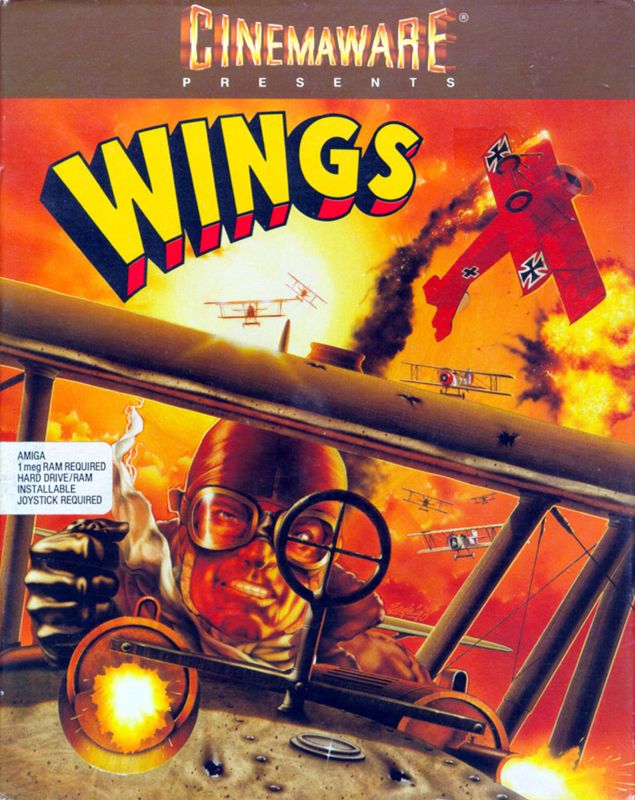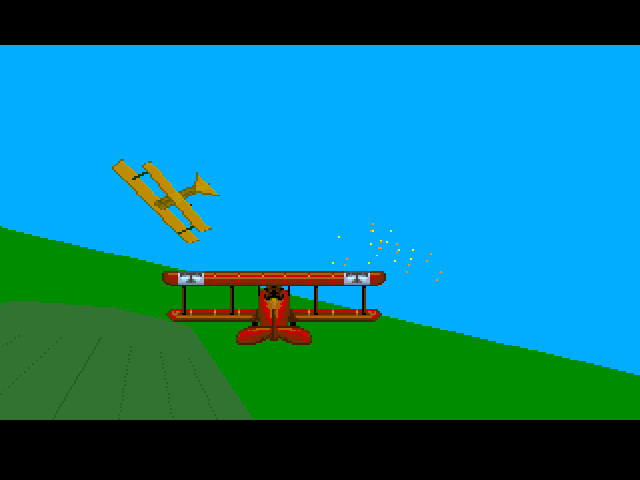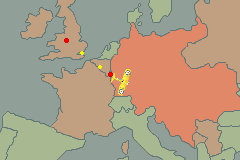Retro Replay Review
Gameplay
Wings thrusts you into the cockpit of an Allied fighter plane during World War I, challenging you to complete over 200 missions that span bombing runs, strafing attacks, and high-stakes aerial dogfights. The mission variety keeps the experience fresh: switch from a strategic top-down view when delivering bombs on critical targets to an isometric perspective during strafing runs, where unlimited ammo lets you unleash chaos on enemy ground forces. Each mode offers a distinct feel, balancing precision objectives with more frenetic, action-packed sequences.
(HEY YOU!! We hope you enjoy! We try not to run ads. So basically, this is a very expensive hobby running this site. Please consider joining us for updates, forums, and more. Network w/ us to make some cash or friends while retro gaming, and you can win some free retro games for posting. Okay, carry on 👍)
The core dogfighting mechanics are rendered in fully 3D behind-the-pilot-camera, delivering an immersive sensation of speed and altitude. Maneuvering your biplane requires a blend of careful throttle control and deft stick inputs, and the learning curve is satisfying without becoming punishing. Enemy AI pilots display varied behaviors—from cautious escorts flying in formation to aggressive “hun” aces diving in for the kill—ensuring no two sorties feel exactly alike.
Progression comes naturally as you move from 1916 through 1918, with your plane’s capabilities and the mission stakes escalating in tandem. Flying formations, responding to wingmen’s radio calls, and managing limited fuel or altitude add layers of tactical decision-making. Whether you’re escorting bombers or performing low-level strafing runs, the balance between strategy and pure aerial combat keeps you engaged for hours on end.
Graphics
For a game set in the early days of 3D graphics, Wings delivers surprisingly crisp visuals that capture the gritty charm of World War I skirmishes. The skyboxes transition dynamically from dawn’s rosy glow to the smoky twilight of battlefield horizons, creating atmospheric backdrops that heighten immersion. Cloud formations and occasional bursts of anti-aircraft flak lend authenticity to each sortie.
Aircraft models show meticulous attention to period detail, from the wood-and-canvas construction of the Sopwith Camel to the riveted fuselage of German fighters. Textures hold up well at different zoom levels, and the cockpit instrumentation, though minimalistic, reinforces the sense of being in a cramped, wind-buffeted cockpit. Explosions and tracer lines are rendered with bright streaks and puffs of smoke that effectively communicate damage and target hits.
The in-mission UI overlays—altitude meters, compass headings, and ammo counters—are unobtrusive yet informative, allowing you to maintain situational awareness without feeling overwhelmed. Cutscenes and mission briefings appear in a journal-style interface that features handwritten notes and sepia-toned artwork, seamlessly tying gameplay visuals to the narrative framework.
Story
While Wings isn’t driven by a cinematic storyline, it uses a compelling diary-entry system to convey the emotional toll of trench warfare and aerial combat. After each mission, you read a page from your character’s journal, where terse reflections and sketch-style illustrations paint a vivid portrait of life as a fighter pilot. This serialized approach builds a narrative thread, as you witness the protagonist’s evolution from eager novice to seasoned ace.
Set between 1916 and 1918, the game captures the shifting balance of power in the skies, accentuating the sense of urgency that defined the Great War. The diary entries often mention fallen comrades, hard-won victories, and the subtle dread of each new assignment, lending gravity to missions that might otherwise feel like mere checkboxes. This blend of personal anecdotes and historical context adds surprising depth to what could have been a purely mechanical experience.
Although there are no fully voiced characters or dramatic cutscenes, the narrative framework is effective in its economy. By keeping story segments short and focused, Wings maintains gameplay momentum while still offering moments of introspection. Players end each sortie not only with new aircraft upgrades but with a tangible sense of having lived through one more turbulent day on the Western Front.
Overall Experience
Wings stands out as an engaging blend of varied mission types, authentic period details, and a novel approach to storytelling. Its trifecta of top-down bombing, isometric strafing, and behind-the-cockpit dogfights ensures that nearly every sortie feels unique. The mission count—over 200—provides substantial playtime, and the gradual escalation of challenge keeps veteran pilots on their toes.
The graphical presentation and UI design strike an effective balance between historical authenticity and playability, making the game accessible to newcomers while still satisfying flight-sim veterans. Though the controls can feel slightly dated compared to modern flight sims, they match the game’s era and reinforce the weighty handling of early-20th-century aircraft.
Ultimately, Wings offers a rewarding test of aerial prowess wrapped in a minimalist yet poignant narrative. Its replayability stems from the freedom to approach missions strategically or charge in guns blazing, and the diary entries provide a personal touch that elevates the overall experience. For anyone intrigued by WWI aviation or classic flight mechanics, Wings delivers an immersive journey through the skies of history.
 Retro Replay Retro Replay gaming reviews, news, emulation, geek stuff and more!
Retro Replay Retro Replay gaming reviews, news, emulation, geek stuff and more!









Reviews
There are no reviews yet.